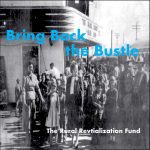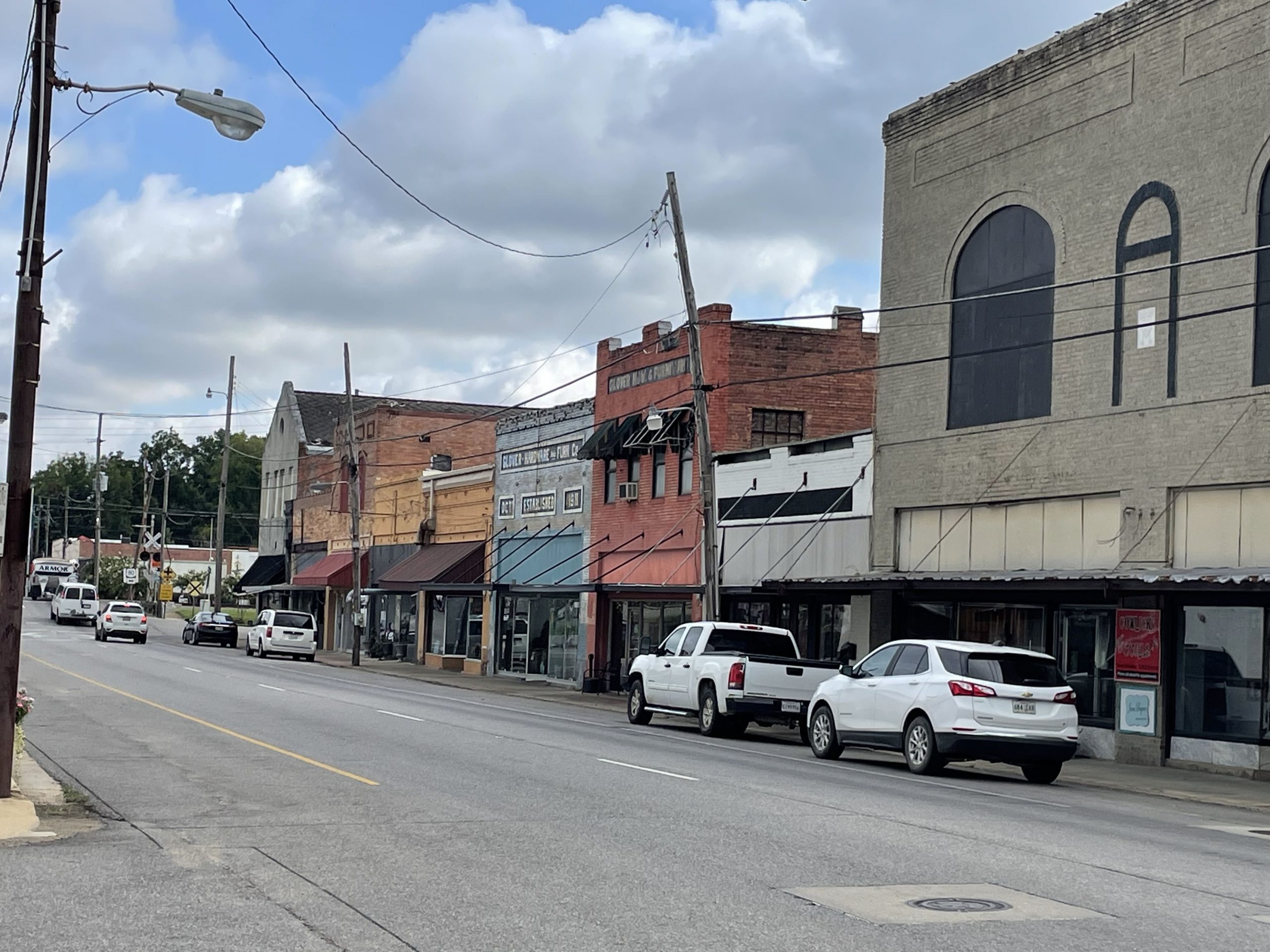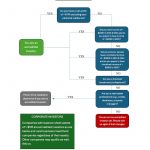
What If Data Centers Leave?
Hi, welcome back to Bring Back the Bustle, the podcast about revitalizing rural America. I’m Shavon Jones, your host. The Rural Revitalization Fund is a rural opportunity zone fund that invests in rural communities where AI data centers are locating. (Our website is ruralqrof.com)
The Fund uses money from many sources including tax and economic development incentives, bank loans, and individual accredited investors. Private investors like to know what the exit strategy is before they invest. So, today, I’m going to talk about what happens if AI Data Centers leave a community where we’re invested.
Are Prognosticators Paranoid?
Why the worry? As you may be aware, there is growing concern within the investment community that AI companies are overspending and that we may be in an AI bubble. There’s concern that not all of the major tech companies currently investing big in AI are going to survive in the space—that perhaps one or 2 will emerge as the dominant player(s) in artificial intelligence.
I don’t pretend to be smart enough to know whether AI is overblown. But where data centers are concerned, I do see a trend. Remember in Amazon’s earlier years, it used to rely on third party carriers including UPS and FedEx to deliver its packages? Then, overtime, it developed its own fleet of delivery trucks and began to ween itself off the third party providers. The major delivery companies saw a sharp downturn in revenues and share prices once Amazon became less dependent on them. Remember that?
Own versus Rent
In the Data Center space, the larger players are starting to become partial (and perhaps complete) owners of their own data centers. Right now, they are still also continuing to lease data center space from third party landlords who specialize in building data centers. But the trend toward integrating the data center at the corporate level is good for rural America. Corporate data centers have their brand is on the line. And they care about their brand and therefore corporate data center owners make investments in rural communities beyond the data center itself.
On the other hand, data center landlords often do not contribute anything to the larger community. They come in raise the electricity prices and do little else. There was an article in the WSJ entitled “Spending on AI is at epic Levels. Will it ever pay off?” The article covered data centers in North Dakota where the town was taking out loans to build out infrastructure (sewers and roads) to accommodate new population generated by the data center. I don’t think infrastructure should be built on the backs of local residents whose cost of living increases based on an influx of jobs that often aren’t open to them. Local politicos should require investment by the companies that come into these markets and earn billions in revenues.
Tech companies make those kinds of investments when their brand is on the line—when their name is on the data center. That corporate investment makes it more profitable for private investors to piggyback off of the data center and fill gaps in those communities with the kind of businesses that the Rural Fund looks to bring to rural communities such as recreation facilities and epicurean grocers. So part of why we believe we’ll be profitable is because we’re choosing the right communities where the corporations are making investments beyond the data center itself.
What this trend says about the towns or areas with third party data centers is more troubling, though. It says to me that if there is over investment in AI, these third party owned data center towns will be the first to be hurt by disinvestment. The big corporations aren’t going to close their own center first. Rather, they’ll decline to renew their leases in the centers owned by third parties.
When Big Businesses Leave
If that comes to fruition, we have enough history about company exits from rural America to guide us. If there is one big employer and it leaves, the direct and trickle down effect are felt immediately and for years to come. If employees of large companies lose their jobs they won’t be able to support the small businesses that opened to serve them. That’s what we all witnessed in urban downtowns that shuttered during the pandemic. The restaurants, clothiers, drug stores and the like that had opened downtown to serve corporate workers were shuttering once those corporate workers stayed home. Today, large employers are solving that problem by making their employees return to offices. But that play isn’t possible in small, single company towns. A decision by that company to leave spells disaster for the town that sprung up to support that business.
So what does that mean for us as investors in rural towns. We have to look at local politics. If local politicians aren’t using the data center as a draw for additional, major investment (such as manufacturing plants, community colleges, or fulfillment centers), they are missing the moment to diversify their local economies and insulate their town from future despair. They are paving the way for history to repeat itself in their town.
More important, they are making themselves less attractive to small private investors like us.
So, when choosing communities, we at the Rural Fund are looking at more factors that whether a data center is locating there. We’re pealing back and looking at whether the data center occupier has skin in the game (meaning at least partial ownership of the center). We’re looking at the whole of economic development incentives to see what else may be coming into that community that might make it possible for the community to survive the exit of a major player. We’re making sure that there will be someplace else for people to work so they can continue to frequent the businesses that we open up to support their workers.
Our Exit Strategy
Our normal exit strategy is to hold for 10 years to get the benefit of tax free appreciation in our shares. In fact, the law allows us to accumulate gains for up to 30 years before the tax break is taken away.
So this investment is intended to be a long-term play where we can park a small amount of money and earn a 25x exit in 10 years or 50x in 15 years plus not pay any taxes on it. The longer it stays in, the more we can earn and either enjoy in our golden years or pass on to future generations tax free.
But what if the industry goes south before our holding period is up? What is our exit strategy, then, at the Rural Fund?
Generally speaking, the first rule in investing is that you make your money on the front end. You want to get in at a low enough price that you lock in significant growth almost immediately. That way, when you exit you realize the gain.
While rural real estate values plummet when a town declines, tax breaks and investment incentives that were received on the front end increase the value of our investment. The government doesn’t take those back. So, if you received money to develop your assets, you made money on the front end. If you didn’t have to pay taxes on the profits earned while the data center was opened and people had jobs and were spending money at your businesses, you made your money on the front end.
So the best exit strategy you can have in rural America, other than choosing markets that stay viable so that you don’t end up needing to exit, is to make your money on the front end by playing the incentives game the way we play it at the Rural Fund. That way, even if we are forced to exit one rural area in favor of another, when you sell your shares they’ll have equity in them that results from the incentives, tax breaks, and annual profits that were earned when times were good.
So pay attention to how the initial investment in rural America is being funded. If it’s solely with private money, then you are heavily dependent on the real estate appreciating in value (which it often does not in rural America). But if the initial investment is a good mix of public and private money, the public contribution is built in profit. You’re making your money on the front end the same way someone makes money if they invest in a distressed real estate asset or a distressed company. If you get a good enough price on the front end, you don’t lose money even if the investment doesn’t perform as well as you initially believed it would.
Therefore, even if our good fortune only lasts for 5 or 6 years in a particular market, we will have used OPM to build our assets. Plus our operating businesses will have accumulated profits that we can take out. So, while an early exit isn’t ideal, we can still make money because we are making our money on the front end.
You can learn more about our investment strategy on our website ruralqrof.com for qualified opportunity zone fund. This is Shavon Jones. I will be back next week with another episode. I’m looking forward to it, and I hope you are too.



No responses yet